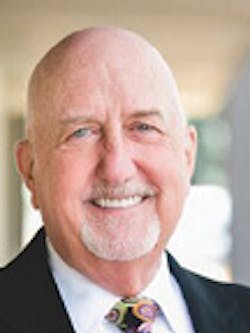Saving time and money with 8th-generation bonding agents
Thomas E. Dudney, DMD
“Time is money,” as the saying goes. In present-day dentistry, time is related to products. For example, we have advanced to where adhesion plays a major role in most procedures. Therefore, it stands to reason that a simple adhesive with universal application would be time-saving and cost-effective.
Eighth-generation adhesives are such time-saving products. They are used both for direct and indirect restorations. They combine etching, priming, and bonding in one bottle when used in the self-etch mode, but can also be used with a total-etch or selective-etch technique. The benefit is that regardless of the clinical procedure, only one type of adhesive is necessary. This reduces the amount of product inventory that must be purchased and maintained.
It should be noted that eighth-generation universal adhesives such as All-Bond Universal (Bisco Dental) should not be confused with single-bottle seventh-generation self-etch adhesives that are incompatible with self-cure and most dual-cure resins and cements. These are more susceptible to hydrolysis and bond degradation.
Historically, bonding to etched enamel has been predictable, while bonding to dentin has been less so. Problems associated with dentin bonding, such as post-op sensitivity, recurrent decay, de-bonds, and restoration failure, can lead to frustration. While no adhesive can make up for poor technique or operator error, good products—when used properly—can reduce the amount of undesired results and remakes, therefore increasing productivity.
Ideally, when bonding to dentin the adhesive would be hydrophilic (important for properly wetting dentin) when being applied. It would become hydrophobic (an important characteristic for durable bonds) after solvent evaporation and light-curing. All universal adhesives contain hydroxyethylmethacrylate (HEMA; the most hydrophilic monomer) and water in their formulations, but residual water left after the air-drying step can contribute to hydrolytic breakdown of the adhesive layer over time. To combat this, I recommend eighth-generation universal adhesives such as All-Bond Universal in which the HEMA and water content are minimized. This allows for complete evaporation (with a 10-second air drying step) and therefore decreased risk of long-term bond degradation.
Many universal adhesives use a phosphate ester 10-MDP (methacryloyloxy-decyl-dihydrogen-phosphate) as their primary adhesive functional monomer. 10-MDP is the most hydrophobic of the adhesive functional monomers and has been shown to ionically bond to calcium in hydroxyapatite to form stable MDP-Ca salts. Furthermore, since the 10-MDP monomer has an affinity for zirconia and metals, these universal adhesives can bond to zirconia, precious and non-precious metals, composites, and glass ceramics. However, most researchers agree that in order to achieve the highest bond strengths to zirconia, a dedicated metal primer such as Z-Prime Plus (Bisco Dental) should be used as well as silane for all glass ceramics.
Since their introduction in 2011, universal adhesives have continued to grow in popularity among dentists. Significant research and development have gone into their production, and the incorporation of adhesive functional monomers such as 10-MDP has greatly contributed to their success. Adhesive dentistry plays a major role in dental procedures, and an adhesive that can reduce the number of steps, limit product inventory, provide predictable results, and decrease post-op problems should certainly increase production and ultimately save time and money.
Thomas E. Dudney, DMD, is a 1977 graduate of the University of Alabama School of Dentistry. He serves as the clinical director of the Pacific Aesthetic Continuum live-patient hands-on programs. He is a fellow of the American Society for Dental Aesthetics and a diplomate of the American Board of Aesthetic Dentistry.

